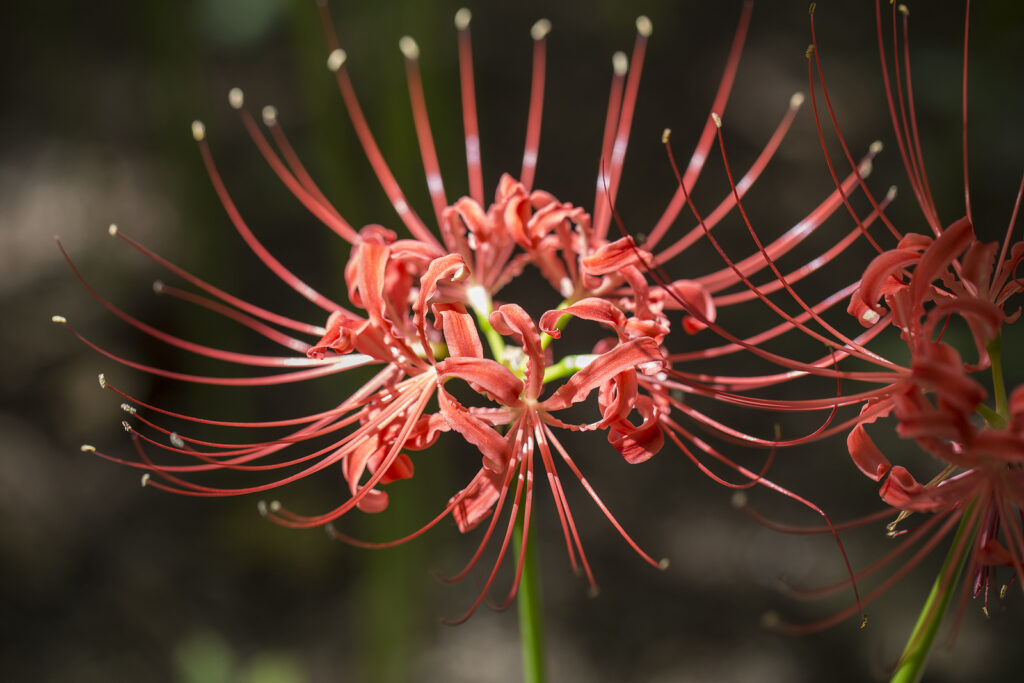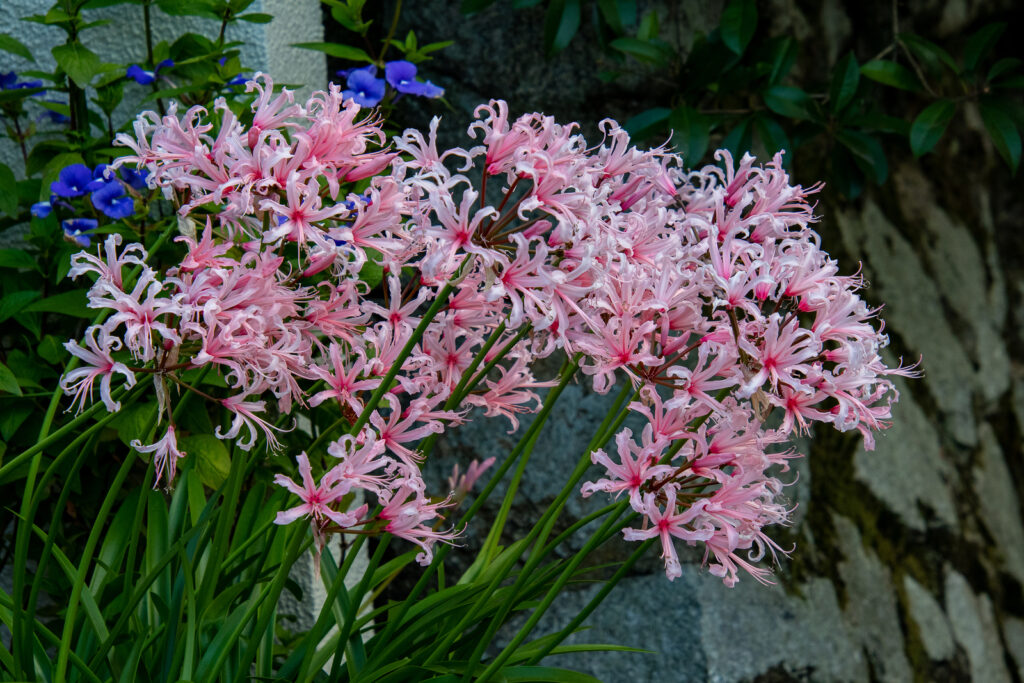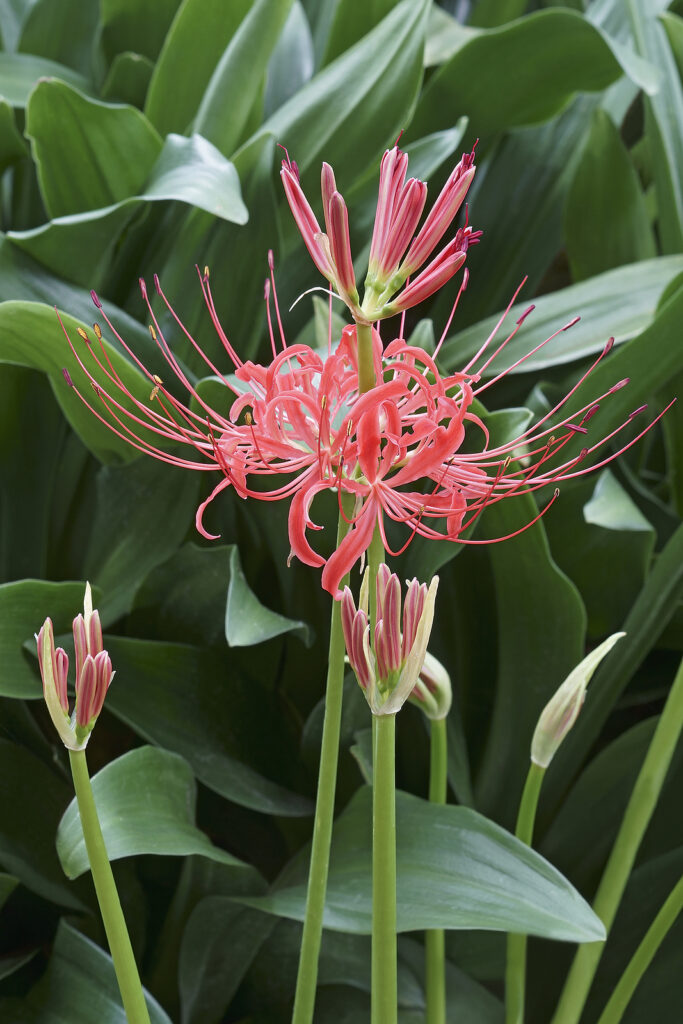Lycoris–commonly called spider lily–bear umbels of tubular-funnel-shaped flowers on leafless stems from early spring to early autumn. Leaves are basal and linear or lance-shaped. Plant Lycoris in fall for spring blooms.
Lycoris are bulbous plants of the Amaryllis Family. They have lily-like red, orange, white, or pinkish-lavender flowers that appear after the narrow leaves have entirely disappeared.
Lycoris are best planted in soil rich in humus in order that they may attain the vigorous growth essential to the production of handsome clusters of flowers. The lush foliage appears in early summer but soon dies back. In late summer, the lovely pink flowers suddenly appear on the naked stalks.
On account of this habit of blooming without foliage, the plants should be surrounded by some type of groundcovers such as snow-in-summer (Ceratium tomentosum) or lavender petunias.

Get to know Lycoris
- Plant type: Flowering bulb
- Growing Zones and range: Zones 5-9
- Hardiness: Half-hardy
- Height and width: 18 to 24 inches (45-61cm) tall, 12 inches (30cm) wide
- Foliage: Strap-shaped leaves
- Flowers: Tubular to trumpet-shaped fragrant flowers with flaring petals; stamens are long, prominent, and showy; flowers appear on leafless stems
- Bloom time: Late summer into fall
- Uses: Beds, borders
- Common name: Spider lily, magic lily, surprise lily
- Botanical name: Lycoris
- Family: Amaryllidaceae
- Origin: China and Japan
Where to plant Lycoriss
- Plant Lycoris in full sun.
- Grow Lycoris in humus-rich, well drained soil.

When to plant Lycoris
- Plant Lycoris bulbs in mid- to late-spring.
Planting and spacing Lycoris
- Plant Lycoris 12 inches apart.
- Plant Lycoris bulbs 5 to 6 inches deep. Planting in clusters promotes better blooming.
How to water and feed Lycoris
- Lycoris need abundant moisture; keep the soil evenly moist. Naked ladies do not like wet soil.
Lycoris care
- Lycoris are prone to root and bulb rot if overwatered.
- Lycoris can be propagated by offsets removed and replanted after flowering.
Growing Lycoris as a houseplant
- Lycoris africana, golden spider lily, L. radiata, and L. squamigera, magic lily, can be grown as houseplants.
- In late summer, pot bulbs in a well-drained, soilless medium.
- Place pots in a room where the temperature is average, light is direct and humidity is average.
- Allow the medium to dry out slightly between waterings.
- The flowers appear quickly and are followed by foliage.
- Remove the flower after they fade, and continue watering the plant until the foliage turns brown in the spring.
- Let the pots dry out, and store them over the summer in a warm place.
- OIN late summer state watering and let the process repeat itself.

Lycoris pests and diseases
- Mealybugs and scale insects may infest plants.
- Leaf spot may occur.
Lycoris propagation
- Sow seed as soon as ripe.
- Remove offsets after flowering and replant.
Lycoris varieties to grow
- Lycoris africana, golden spider lily. Leaves to 12 inches long and nealry 1 inch wide; bears bright yellow flowers 3 inches long; flowers appear on 15-inch stems; petals have wavy margins and are recurved.
- L. radiata, red spider lily. Easiest to grow; grows to 18 inches tall; leaves 12 inches long; bears pink to coral-red flowers with a golden sheen.
- L. sanguinea bears bright red to orange-red flowers; petals are narrow and recurved.
- L. sprengeri bears purplish-pink flowers.
- L. squamigera, magic lily. Grows to 24 inches tall; leaves to 12 inches long; bears fragrant pink or rosy lilac 3-inch flowers with yellow base on 24 inch stems; hardiest species.



